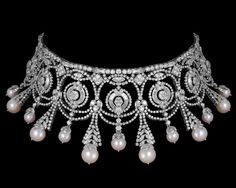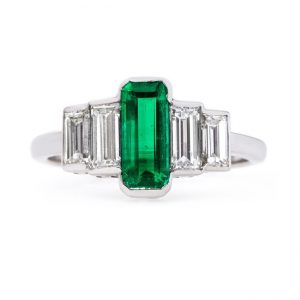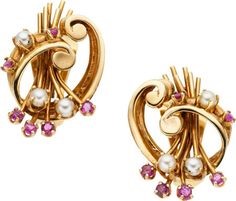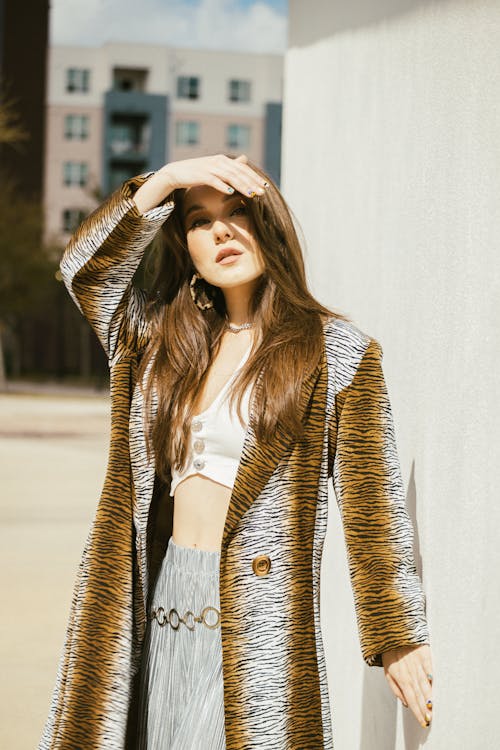There are several different time periods that have heavily influenced jewelry throughout the ages. Some of the most prominent eras include the Georgian, Victorian, Art Nouveau, Edwardian, Art Deco, Retro, Mid-Century, and Modern eras. To learn more about the history of jewelry making, read on for the common themes, influences, and materials of each jewelry time period.
Georgian Era
The Georgian era began around the 1710s and ended during the 1830s. This era was named after the four English kings, George I through George IV. This jewelry time period had a global influence on the aesthetics of the time and had three main styles, including:
- Rococo
- Gothic Revival
- Neoclassical
The Rococo period, which lasted from 1714 to 1727, featured elaborate ornamentation inspired by Baroque architecture. The Gothic Revival 
While there were three distinct jewelry periods in this era, there were still several prevailing themes. It wasn’t uncommon to see:
- Jewelry with crowned hearts, known as Luckenbooth, that were given as love tokens.
- Cannetille with gold wirework, stylized flowers, and the sevigne bow.
- Closed back designs in gemstone pieces.
This was also an era when many jewelry pieces were made to be worn in multiple ways, such as using necklaces as crowns and brooches as hairpieces.
Victorian Era
The Victorian era, named after Queen Victoria, lasted from the 1830s to 1900s. Queen Victoria heavily influenced this era and, due to her popularity, most of her fashions were adopted by royalty, nobles, and commoners alike.
There were three main ages in this jewelry time period that marked the trajectory of Victoria’s reign:
- Romantic Period
- Grand Period
- Late Victorian Period

The Grand period began with the death of Prince Albert. Queen Victoria was in mourning and her country mourned with her. Dark stones, including onyx, garnet, and black enamel, were frequently used and there was a return to the ancient jewelry influences of the Egyptians, Etruscans, and the Renaissance. Cameos also grew in popularity and generally depicted the Queen’s profile.
During the Late Victorian era, the Queen decided there had been enough mourning and it was time to return to whimsy and prosperity. The jewelry during this time period saw nature’s influence rise once again, and animals, stars, dragons, and flowers regained their place on rings, necklaces, and brooches. Semi-precious stones, such as amethyst, opals, and turquoise were incredibly popular and there was a rising jewelry trend of separate pieces that could be assembled or disassembled into several different pieces of jewelry.
Art Nouveau Era
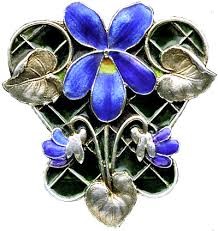
As Japanese trade increased throughout Europe, their simple, stylized woodcuts captured the imagination of the country and urged towards a similar decorative style. Mixed media ran rampant, and it wasn’t unusual to see horns, amber, ivory, glass, and enamel mixed in with various precious metals and gemstones. Enamel that looked like stained glass was especially revered.
Edwardian Era
The Edwardian era, named after Queen Victoria’s son, Edward VII, reigned from 1901 to 1910. The pieces during this jewelry time period were a mix of Victorian and Art Nouveau themes and resulted in a number of light, airy pieces that were entwined with complex and opulent designs. These pieces included filigree, lace details, garlands, bows, tassels, and scalloped edges. The most common pieces worn were meant to be dramatic, like chokers made with diamonds, pearls, and white gold, or dangling earrings in monochromatic tones.
Non-jewelry accessories also became commonplace, as hat pins, watch fobs, and multiple bracelets became popular. The Edwardian era also saw the development of the Brilliant cut diamond and milgraining.
Art Deco Era
During the 1920s through the 1930s, mechanisms and engineering captured the imagination and led to the Art Deco era, also known as Style Moderne. Industrial designs, inspired by the Empire State Building, Radio City Music Hall, and the Chrysler Building began appearing and the symmetrical rigidity of buildings found its way into rings, necklaces, and earrings. Designs with geometric patterns, stepped edges, arched corners, and pyramids showed an obsession with the industrial age, as well as ancient Aztec and Egyptian architecture.
Long pendants, cocktail rings, and elaborate cigarette cases joined the growing list of jeweled accessories available.
Retro Era
The Retro era came as a reaction to World War II and was evident throughout the 1930s and 1950s. Platinum was scarce, so most jewelry in this time period featured different colored golds, often mixed within one piece.
Jewelry attempted to recreate the bright, happy essence of less war torn times, and gemstones, designs, and metals all aimed towards the vibrant and cheerful. Ribbons and bows adorned with blue aquamarine, yellow topaz, golden citrine, crimson rubies, and cobalt sapphires were popular. In fact, sapphires and rubies were so sought-after that there was a demand for the cheaper synthetic versions everyone could afford.
There was also a rise in the demands for diamonds due to the De Beers campaign that began in the 1930s. The timeless phrase Diamonds are Forever was on everyone’s lips as De Beers crusaded to change the social norm to ensure that every girl wanted a diamond engagement ring before she was wed.
Mid-Century Era
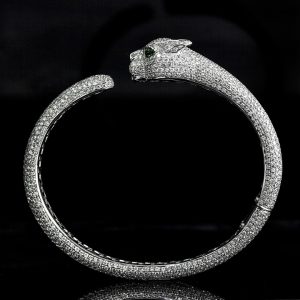
There were several common designs like starburst patterns and textured gold, featuring Florentine finishes, twisted rope, braided wire, mesh, and reeding.
Intricately detailed animal jewelry from infamous jewelry houses like Van Cleef & Arpels, Cartier, and Tiffany’s, showcased serpents, fish, birds, foxes, and cats festooned with amethyst, turquoise, coral, diamonds, and pearls. Cabochon stones, and round, smooth stones also gained popularity.
Modern Era
From the 1960s through the present there have been a few main jewelry themes: professional, practical jewelry, mystical jewelry, and vintage-inspired jewelry. Both styles are influenced by the past and make an effort to ensure ethical sourcing through recycled metals and ethical gemstones.
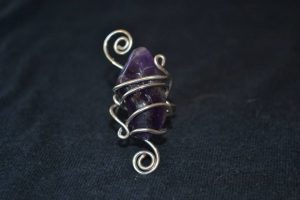
During the late 1990s, practitioners of energy arts, like feng shui and reiki, popularized the symbolism and meaning behind many stones. They encouraged people to place stones with supposed positive energy in their homes and adorn themselves with raw and river tumbled stones wrapped in an energy conductive metal like copper.
More recently, there has been a revival of interest in historical jewelry. Many people choose vintage-inspired jewelry for its aesthetics, its history, and its ethical background. Victorian, Edwardian, and Art Deco pieces are the most desired and there is a lot of interest in antique and vintage engagement rings in particular.
A Trusted Manufacturer
While true vintage and antique pieces are often scarce and expensive, many jewelers are turning to local manufacturers to help them create pieces inspired by the most popular jewelry time periods. As experts in wax modelling, computer aided design and manufacturing, traditional casting methods, and finishing, experienced jewelers can help you design and fabricate any style of jewelry you can imagine, drawing inspiration from pieces throughout the history of jewelry making.
